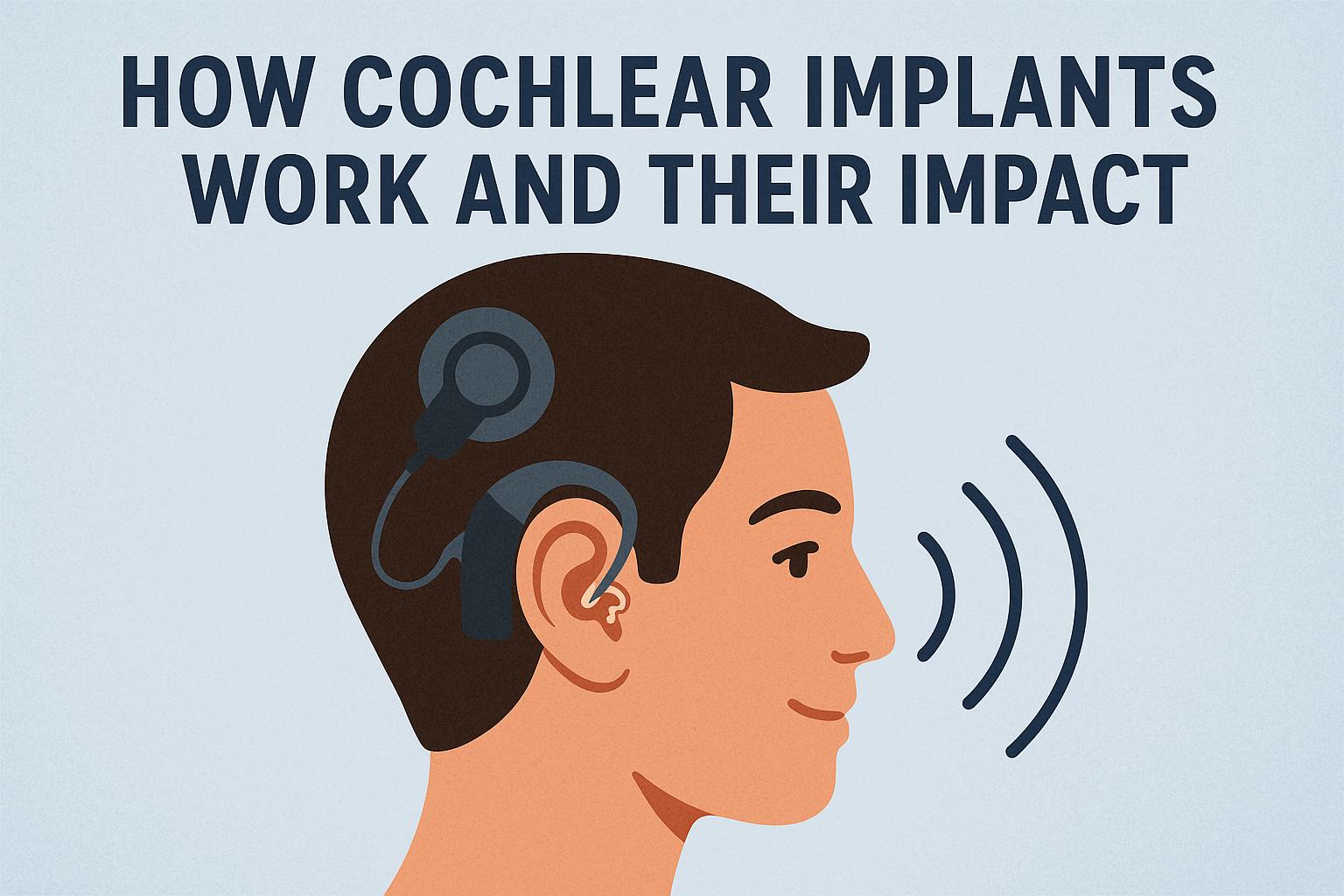Introduction to Cochlear Implants
Cochlear implants are medical devices designed to provide a sense of sound to individuals with severe to profound hearing loss. Unlike conventional hearing aids, which amplify sound, cochlear implants bypass damaged sections of the ear and directly stimulate the auditory nerve. This technology has been transformative, enabling many to perceive sound and engage in auditory communication.
Components of Cochlear Implants
A cochlear implant system is composed of two primary parts: the external component and the internal component.
The external component includes several elements critical to its function. First, a microphone captures incoming sound from the environment. This sound is then passed to a speech processor, which digitizes the acoustic signals, transforming them into a format suitable for transmission. The processed digital signals are then sent to a transmitter coil, a specialized part that communicates with the internal component.
The internal component, which is surgically implanted, is responsible for converting these digital signals into electrical impulses. Embedded within the cochlea, it features a receiver-stimulator package that receives signals from the external transmitter coil. Connected to this package is an electrode array, inserted into the cochlea, which delivers precise electrical stimulation directly to the auditory nerve.
How Cochlear Implants Work
The mechanism of cochlear implants involves bypassing damaged or non-functioning parts of the inner ear to facilitate sound perception. Here is a step-by-step breakdown of how these devices operate:
1. The microphone in the external component captures ambient sound.
2. Captured sounds are digitized by the speech processor, turning them into a digital code suitable for further transmission.
3. The digital signals are relayed to the transmitter coil, which is positioned externally against the user’s head.
4. These signals are then received by the receiver-stimulator in the internal component, located under the skin.
5. The electrode array, inserted within the cochlea, delivers targeted electrical stimulation to the auditory nerve, which in turn sends impulses to the brain for sound interpretation.
This sophisticated process allows individuals with hearing impairments to perceive sound, even if their natural hearing mechanism is unable to do so.
For more information on the technical aspects, you may want to refer to reliable resources like those from the National Institute on Deafness and Other Communication Disorders.
Benefits and Limitations
Cochlear implants provide a range of benefits to individuals with significant hearing loss. They can significantly improve speech perception, enabling users to understand spoken language more clearly and interact more easily. These devices also enhance the ability to discern various environmental sounds, which can be crucial for safety and social interaction. Furthermore, for many users, cochlear implants offer a level of sound clarity that surpasses traditional hearing aids, which may primarily amplify sound rather than directly stimulating the auditory nerve.
Despite these advantages, cochlear implants also have limitations. It is important to clarify that these devices do not restore normal hearing. The efficacy of cochlear implants varies among users and depends on several individual factors. These include the length of time an individual has experienced hearing loss prior to implantation, the state of the auditory nerve, and the effectiveness of post-implantation rehabilitation efforts. Successful adaptation to cochlear implants often requires comprehensive rehabilitation, which includes training in auditory skills and speech perception.
Rehabilitation and Adaptation
After the surgical implantation of a cochlear device, aural rehabilitation plays a crucial role in helping users adapt to their new way of hearing. This adaptation process is essential because the auditory experience provided by cochlear implants differs significantly from natural hearing or the sound amplification provided by hearing aids. Rehabilitation involves extensive training in both speech perception and production, tailored to help users make the best use of their enhanced sound perception capabilities.
Professional support is needed during this rehabilitation phase, typically involving audiologists and specialized therapists. These professionals guide users through various auditory and speech training exercises designed to improve communication skills and enhance the ability to respond to auditory stimuli. Over time, many users can achieve a level of auditory comprehension that allows them to engage more fully in social and professional exchanges.
Conclusion
Cochlear implants represent a significant advancement in auditory technology, offering substantial benefits to those with severe hearing loss. While they do not replicate the experience of natural hearing perfectly, cochlear implants have fundamentally changed the lives of many by facilitating improved communication and integration into the hearing world. For individuals considering this technology, a consultation with an audiologist can provide valuable insights into whether they are suitable candidates for this intervention. The consultation process typically includes an evaluation of the potential benefits and adjustments required, ensuring that prospective users have a realistic understanding of the outcomes they can expect.
